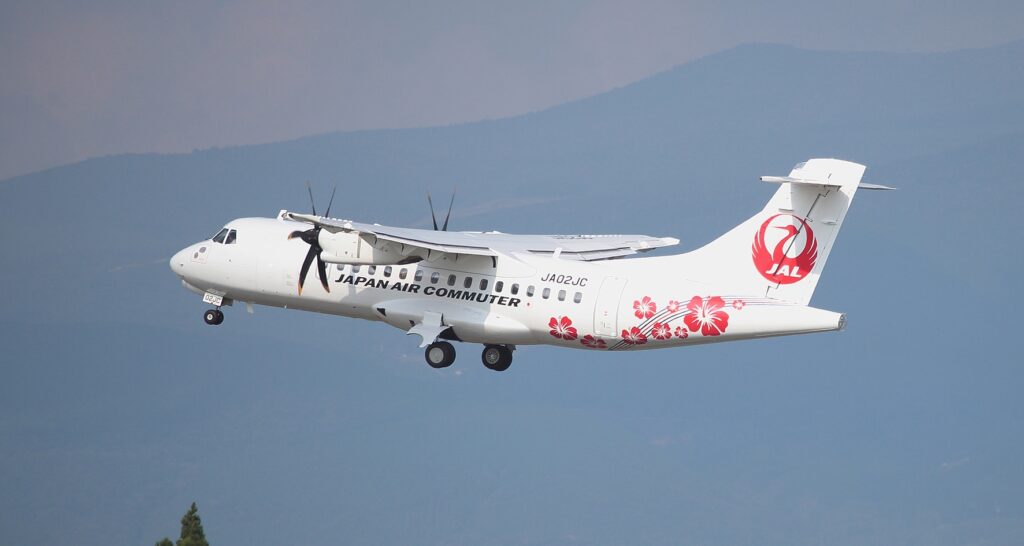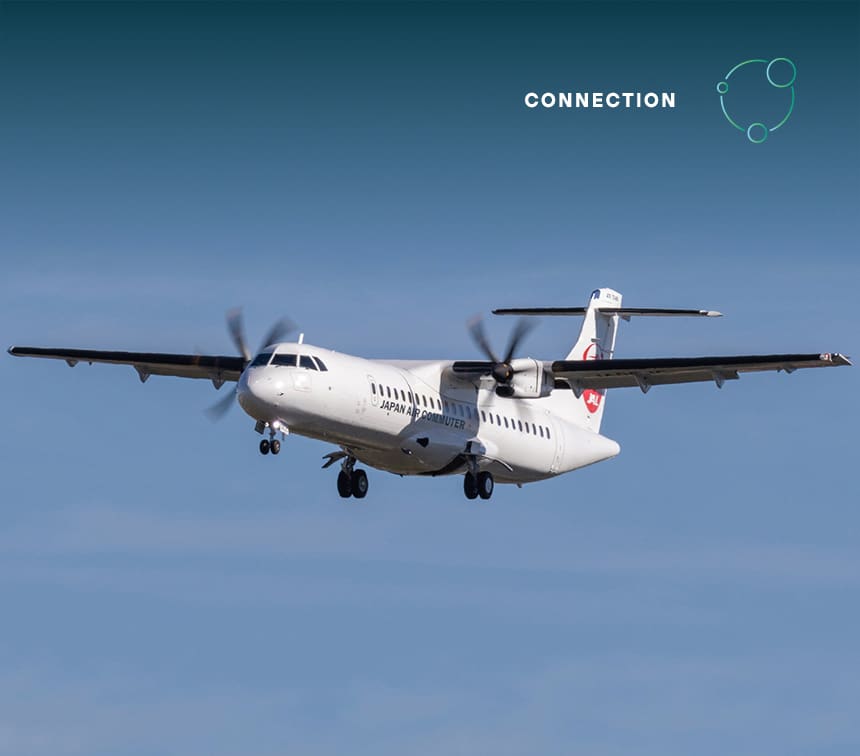Yoron: Small Island, Big Connections
Japan stretches in a ribbon of 14,125 islands across the Pacific. Beyond the megacities and Shinkansen rails, life in rural Japan depends on something far less visible but just as vital: regional aviation.
For many remote communities, aircraft aren’t just a way to travel. They are a lifeline, bringing food, medicine, education, tourism, and economic opportunities. And in a country where short runways and challenging geography are the norm, not every aircraft can do the job.
That’s where ATR comes in.
The perfect aircraft for Japan’s regional challenges
ATR aircraft are built to operate with ease on short runways and with efficiency. Even though ATR turboprop aircraft can land on strips shorter than 1,200 meters, that distance is the key to open up islands and communities that might otherwise be cut off.
That’s why Japan Air Commuter (JAC) introduced its first ATR in 2017. Since then, their 11 ATR aircraft have become the workhorses connecting Japan’s southern islands, from Kagoshima down to Okinawa, landing on short runways and handling the unique challenges of island aviation. With more than 37,000 ATR flights, carrying over 885,000 passengers yearly. These numbers reflect just how central ATR aircraft have become to regional mobility in Japan’s island communities.
Where the Runway Ends, ATR Takes Off.

A spotlight on Yoron Island
Take Yoron, a jewel of the Amami archipelago.
Just 20 km across.
Surrounded by coral reefs and cobalt-blue seas.
Home to about 5,000 residents.
Its runway? Only 1,200 meters. Too short for most regional jets. But perfect for the ATR.
” We chose ATR because of its performance. We have a 1200-metre runway, and the ATR was the aircraft that fit those conditions. “
Kasamatsu Kaoru
Senior VP, Corporate Planning & Finance
Japan Air Commuter
That’s because ATR aircraft are uniquely designed for short field operations. ATR turboprops achieve short takeoff and landing performance through a combination of aerodynamic efficiency and power management. Their high aspect-ratio wing, combined with optimised flap settings ensures low approach speed thanks to an increased lift at low speed, while the six-blade propellers provide both high thrust at take-off and effective aerodynamic braking in ground-idle and reverse pitch after touchdown. Deceleration is further enhanced by carbon brakes that are designed for repeated short-field operations. Coupled with a reinforced landing gear capable of handling unpaved and narrow runways, these design features enable ATR aircraft to safely operate on runways down to 1,000 meters, extending regional connectivity to airfields beyond the reach of conventional jets.

Okay, that was the avgeek talk, now for the rest of us mortals this means that even remote islands like Yoron can stay connected all year long. It gives the people the option of having a 45-minute flight to Okinawa instead of a long, exhausting boat journey. For young families, that means safer, easier access to healthcare. For locals, it’s the freedom to connect with the mainland without leaving their island roots. For businesses, it’s a steady flow of visitors bringing new opportunities. ATR aircraft make daily life possible, connecting Yoron to Kagoshima and Amamioshima with a daily round trip. Carrying a total of 3,832 passengers*. Although this might seem modest compared to Japan’s mega-hubs, but for Yoron’s 5,000 residents, these connections represent a lifeline to healthcare, education, trade, and tourism.
*July 2025 Data
Not just a journey, a lifeline.
Since ATR flights began, tourism has grown steadily, including more international visitors discovering Yoron’s beaches and resorts. The local economy is feeling the ripple effects, from hotels like Pricia Resort to small shops and restaurants.
But beyond economics, ATR has become an integral part of daily life:
Medical transfers.
Family visits.
Cargo and supplies.
ATR turboprop aircraft help ensure that even Japan’s smallest islands remain vibrant, connected, and thriving.
In a world where sustainability and accessibility matter more than ever, ATR is shining in the role it plays in Japan’s regional connectivity. By combining fuel efficiency, short-field performance, and reliability, ATR is helping write the next chapter of island life, from Yoron to the farthest reaches of the archipelago.
Because no matter how small an island may be, its people deserve to be connected.














